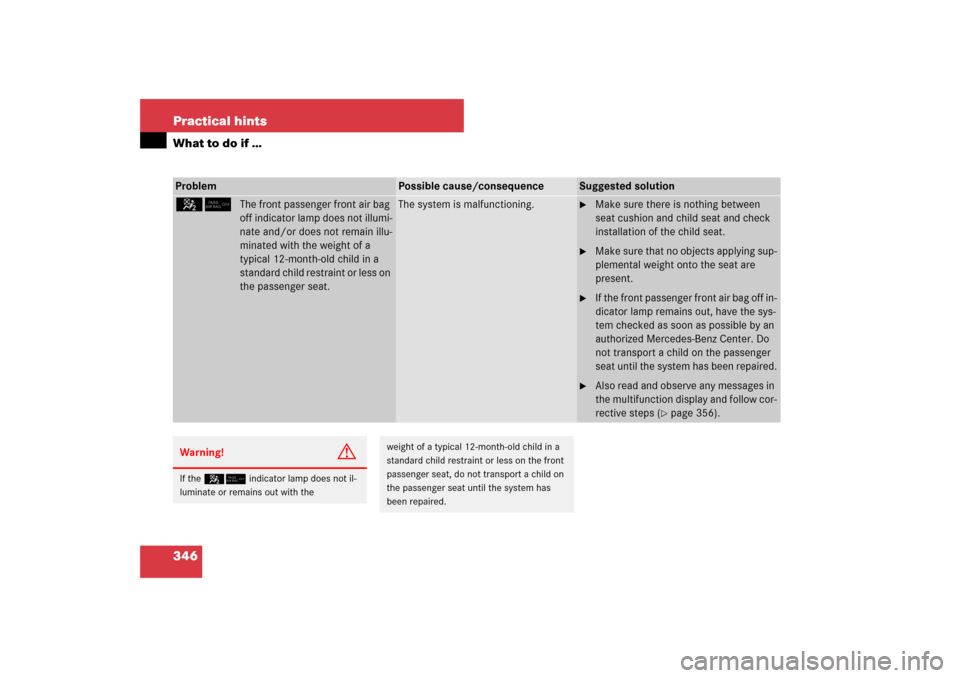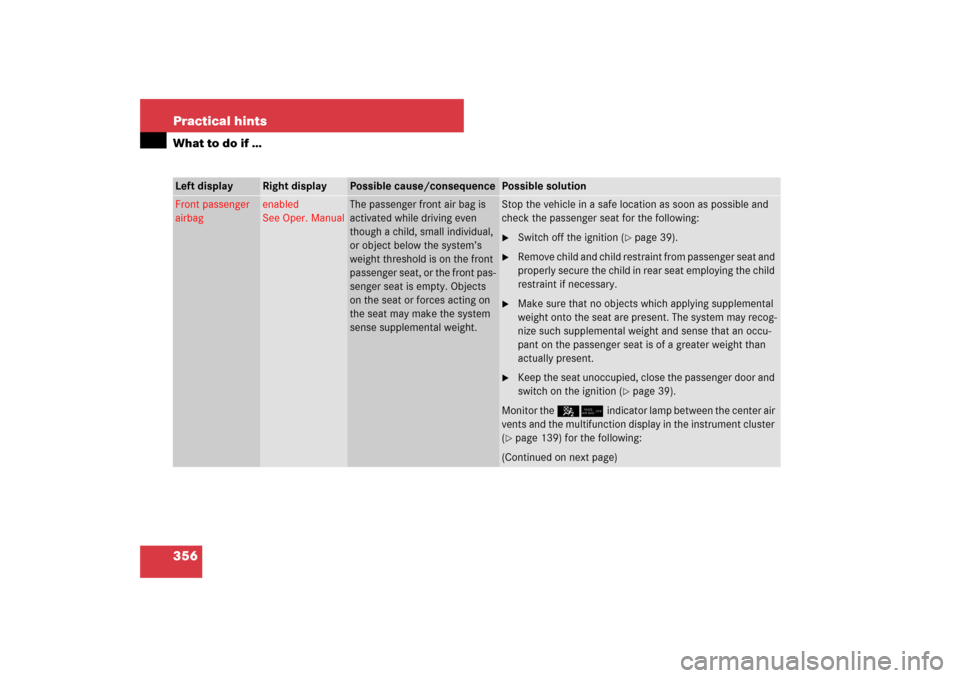Page 314 of 473

313 Operation
Tires and wheels
GVWR (G
ross V
ehicle W
eight R
ating)
This is the maximum permissible vehicle
weight of the fully loaded vehicle (weight of
the vehicle including all options, passen-
gers, fuel, and cargo and, if applicable,
trailer tongue load). It is indicated on
certification label located on the driver’s
door B-pillar.
Kilopascal (kPa)
The metric unit for air pressure. There are
6.9 kPa to 1 psi; another metric unit for air
pressure is bars. There are 100 kilopascals
(kPa) to 1 bar.
Maximum load rating
The maximum load in kilograms and
pounds that can be carried by the tire.
Maximum loaded vehicle weight
The sum of curb weight, accessory weight,
vehicle capacity weight and production
options weight.Maximum tire inflation pressure
This number is the greatest amount of air
pressure that should ever be put in the tire
under normal driving conditions.
Normal occupant weight
The number of occupants the vehicle is
designed to seat, multiplied by
68 kilograms (150 lbs).
Occupant distribution
The distribution of occupants in a vehicle
at their designated seating positions.
Production options weight
The combined weight of those installed
regular production options weighing over
5 lbs (2.3 kilograms) in excess of those
standard items which they replace, not
previously considered in curb weight or
accessory weight, including heavy duty
brakes, ride levelers, roof rack, heavy duty
battery, and special trim.PSI (P
ounds per s
quare i
nch)
A standard unit of measure for air pressure
-> bar, kilopascal (kPa).
Recommended tire inflation pressure
Recommended tire inflation pressure
listed on placard located on driver’s door
B-pillar for normal driving conditions.
Provides best handling, tread life and
riding comfort.
Rim
A metal support for a tire or a tire and tube
assembly upon which the tire beads are
seated.
Sidewall
The portion of a tire between the tread and
the bead.
Page 315 of 473

314 OperationTires and wheelsTIN (T
ire I
dentification N
umber)
Unique identifier which facilitates efforts
by tire manufacturers to notify purchasers
in recall situations or other safety matters
concerning tires and gives purchases the
means to easily identify such tires. The TIN
is comprised of “Manufacturer’s identifica-
tion mark”, “Tire size”, “Tire type code”
and “Date of manufacture”.
Tire load rating
Numerical code associated with the
maximum load a tire can support.
Tire ply composition and material used
This indicates the number of plies or the
number of layers of rubber-coated fabric in
the tire tread and sidewall. Tire manufac-
turers also must indicate the ply materials
in the tire and sidewall, which include
steel, nylon, polyester, and others.Tire speed rating
Part of tire designation; indicates the
speed range for which a tire is approved.
Traction
Force exerted by the vehicle on the road
via the tires. The amount of grip provided.
Tread
The portion of a tire that comes into
contact with the road.
Treadwear indicators
Narrow bands, sometimes called
“wear bars” that show across the tread of
a tire when only
1/16
in (1.6 mm) of tread
remains.Uniform Tire Quality Grading Standards
A tire information system that provides
consumers with ratings for a tire’s traction,
temperature and treadwear. Ratings are
determined by tire manufacturers using
government testing procedures. The
ratings are molded into the sidewall of the
tire.
Vehicle capacity weight
Rated cargo and luggage load plus
68 kilograms (150 lbs) times the vehicle’s
designated seating capacity.
Vehicle maximum load on the tire
Load on an individual tire that is
determined by distributing to each axle its
share of the maximum loaded vehicle
weight and dividing it by two.
Page 346 of 473
345 Practical hints
What to do if …
Air bag off indicator lampProblem
Possible cause/consequence
Suggested solution
5/
The front passenger front air bag
off indicator lamp illuminates and
remains illuminated with the
weight of a typical adult or some-
one larger than a small individual
on the passenger seat.
The system is malfunctioning.
�
Have the system checked as soon as
possible by an authorized
Mercedes-Benz Center.
�
Also read and observe any messages in
the multifunction display and follow cor-
rective steps (
�page 356).
Warning!
G
If the5/indicator lamp illuminates
and remains illuminated with the weight of a
typical adult or someone larger than a small
individual on the passenger seat, do not
have any passenger use the passenger seat
until the system has been repaired.
Page 347 of 473

346 Practical hintsWhat to do if …Problem
Possible cause/consequence
Suggested solution
5/
The front passenger front air bag
off indicator lamp does not illumi-
nate and/or does not remain illu-
minated with the weight of a
typical 12-month-old child in a
standard child restraint or less on
the passenger seat.
The system is malfunctioning.
�
Make sure there is nothing between
seat cushion and child seat and check
installation of the child seat.
�
Make sure that no objects applying sup-
plemental weight onto the seat are
present.
�
If the front passenger front air bag off in-
dicator lamp remains out, have the sys-
tem checked as soon as possible by an
authorized Mercedes-Benz Center. Do
not transport a child on the passenger
seat until the system has been repaired.
�
Also read and observe any messages in
the multifunction display and follow cor-
rective steps (
�page 356).
Warning!
G
If the5/indicator lamp does not il-
luminate or remains out with the
weight of a typical 12-month-old child in a
standard child restraint or less on the front
passenger seat, do not transport a child on
the passenger seat until the system has
been repaired.
Page 357 of 473

356 Practical hintsWhat to do if …Left display
Right display
Possible cause/consequence
Possible solution
Front passenger
airbag
enabled
See Oper. Manual
The passenger front air bag is
activated while driving even
though a child, small individual,
or object below the system’s
weight threshold is on the front
passenger seat, or the front pas-
senger seat is empty. Objects
on the seat or forces acting on
the seat may make the system
sense supplemental weight.
Stop the vehicle in a safe location as soon as possible and
check the passenger seat for the following:�
Switch off the ignition (
�page 39).
�
Remove child and child restraint from passenger seat and
properly secure the child in rear seat employing the child
restraint if necessary.
�
Make sure that no objects which applying supplemental
weight onto the seat are present. The system may recog-
nize such supplemental weight and sense that an occu-
pant on the passenger seat is of a greater weight than
actually present.
�
Keep the seat unoccupied, close the passenger door and
switch on the ignition (
�page 39).
Monitor the 5/indicator lamp between the center air
vents and the multifunction display in the instrument cluster
(
�page 139) for the following:
(Continued on next page)
Page 359 of 473
358 Practical hintsWhat to do if …Left display
Right display
Possible cause/consequence
Possible solution
Front passenger
airbag
disabled
See Oper. Manual
The passenger front air bag is
deactivated while driving even
though an adult or someone
larger than a small individual is
occupying the front passenger
seat. Forces acting on the seat
may make the system sense a
decrease in weight.
Stop the vehicle in a safe location as soon as possible and
check the front passenger seat for the following:�
Switch off the ignition (
�page 39).
�
Have the passenger vacate the seat and exit the vehicle.
�
Keep the seat unoccupied, close the passenger door and
switch on the ignition (
�page 39).
Monitor the 5/indicator lamp between the center air
vents (
�page 76) and the multifunction display in the instru-
ment cluster (
�page 139) for the following:
(Continued on next page)
Page 413 of 473

412 Practical hintsFlat tireLowering the vehicle�
Lower vehicle by turning crank coun-
terclockwise until the full weight of the
vehicle is resting on the ground.
�
Pull the jack out of the jack support
tube.
1 - 5 Wheel bolts
�
Tighten the five wheel bolts evenly, fol-
lowing the diagonal sequence illustrat-
ed (1 to 5), until all bolts are tight.
Observe a tightening torque of 96 lb-ft
(130 Nm).
�
Before storing the jack in the trunk,
crank back to storage position and fold
in the arm.
Replacing jack support tube cover
�
Slide tongue of cover under the upper
edge of the tube opening.
�
Applying even pressure, press cover
until it snaps into place.
Be careful not to damage the locking
tabs or clamp the plastic retaining
strap.
i
The flat tire may be transported in the trunk
when the retractable hardtop is raised. If avail-
able, use a protective sheet on the spare wheel.
Vehicles with TPMS or Advanced TPMS*:
Do not activate the tire inflation pressure moni-
tor until a full size wheel/tire with functioning
sensor has been placed back into service on the
vehicle.
Warning!
G
Have the tightening torque checked after
changing a wheel. The wheels could come
loose if they are not tightened to a torque of
96 lb-ft (130 Nm).Warning!
G
When turning the wheel wrench to tighten
the wheel bolts, make sure you position
hands on the wrench in such a way that you
avoid injury to yourself, such as scraping
your hands against the wheel. Make sure
turning the wheel wrench will not scratch or
damage the wheel rim.
i
For information on storing the spare wheel
back into the trunk, see “Storing the spare wheel
after use” (
�page 390).
��
Page 428 of 473
427 Technical data
Parts service
Warranty coverage
Identification labels
Layout of poly-V-belt drive
Engine
Rims and tires
Electrical system
Main dimensions
Weights
Fuels, coolants, lubricants, etc.